
 This the sign on the outside wall that
tells you where Mark Gibb was visiting in May 2024. Mark sent us
these pictures of the smaller bikes along with some of the weirder stuff
in the museum. He didn’t tell us what the pictures are of, so any
mistakes in Identifying them are all are own work…
This the sign on the outside wall that
tells you where Mark Gibb was visiting in May 2024. Mark sent us
these pictures of the smaller bikes along with some of the weirder stuff
in the museum. He didn’t tell us what the pictures are of, so any
mistakes in Identifying them are all are own work…
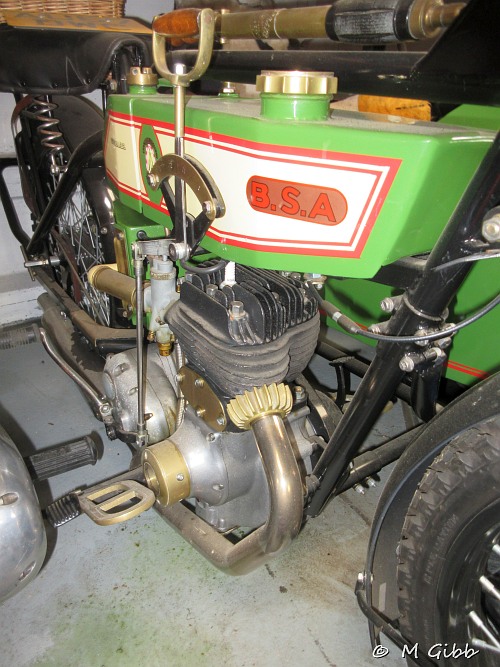 …and we come
unstuck on the first picture: it’s a single cylinder flat tanker with
‘BSA’ on the side… BSA
…and we come
unstuck on the first picture: it’s a single cylinder flat tanker with
‘BSA’ on the side… BSA
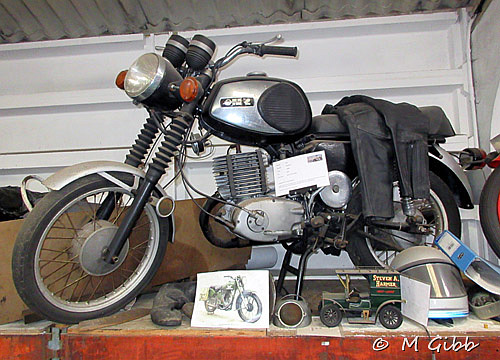 Now we’ on slightly firmer ground—
this is an MZ TS250 dating from 1980.
Now we’ on slightly firmer ground—
this is an MZ TS250 dating from 1980.
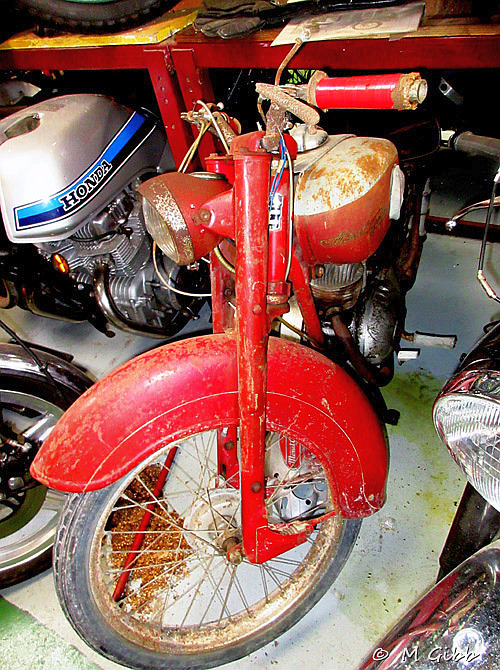 Next is this
Monet–Goyon, we’re not sure of the model—an S6V perhaps. The small
springs at the base of the forks are Grégoire compensators: a feature
unique to Monet–Goyon.
Next is this
Monet–Goyon, we’re not sure of the model—an S6V perhaps. The small
springs at the base of the forks are Grégoire compensators: a feature
unique to Monet–Goyon.
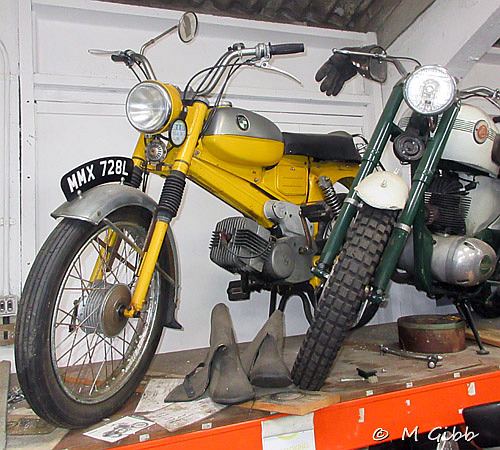 This is a 1972
Puch VZ50/3P
This is a 1972
Puch VZ50/3P
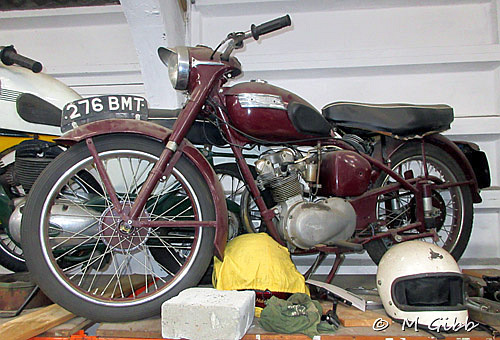 A 1954
Triumph and, with plunger rear suspension, we’d hazard a guess that it’s
a Terrier.
A 1954
Triumph and, with plunger rear suspension, we’d hazard a guess that it’s
a Terrier.
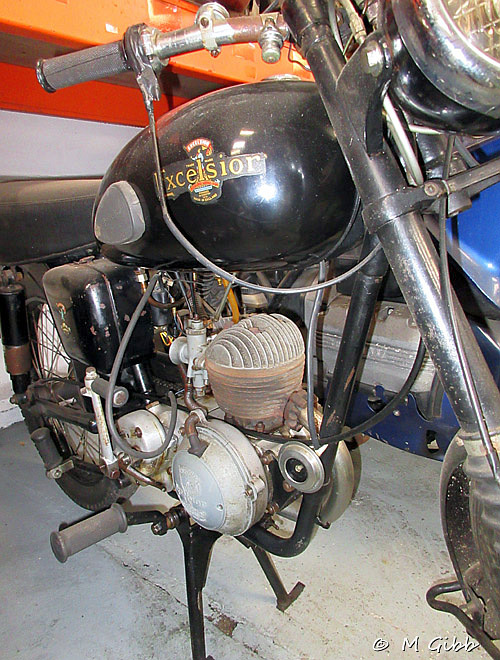 An Excelsior Universal with
Excelsior’s own 147cc engine
An Excelsior Universal with
Excelsior’s own 147cc engine
 Now for
something a little more exotic: all the way from Hungary, a Danuvia
DV-125 … or is it a DMV-125?
Now for
something a little more exotic: all the way from Hungary, a Danuvia
DV-125 … or is it a DMV-125?
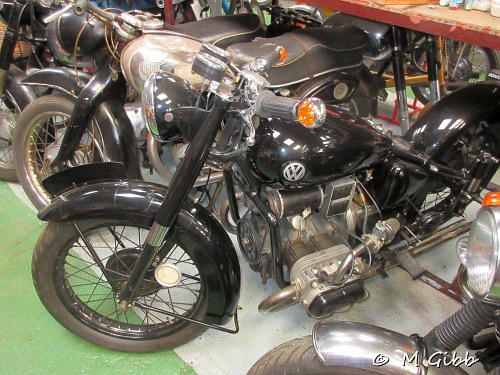 A
'Special' with a Volkswagen car engine.
A
'Special' with a Volkswagen car engine.
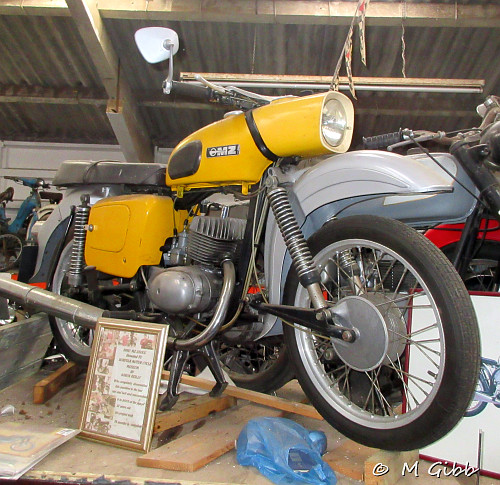 An MZ ES250
An MZ ES250
 This Honda
H100S-II is blue, so it’s going to date from no earlier than 1988.
This Honda
H100S-II is blue, so it’s going to date from no earlier than 1988.
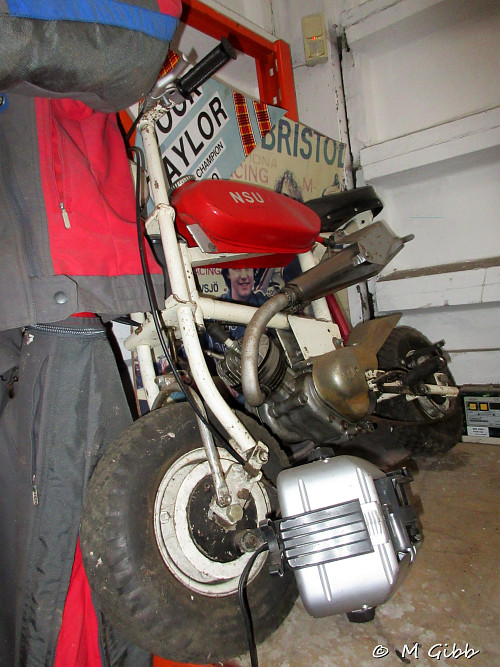 This Mini-bike has an NSU
Quickly engine.
This Mini-bike has an NSU
Quickly engine.
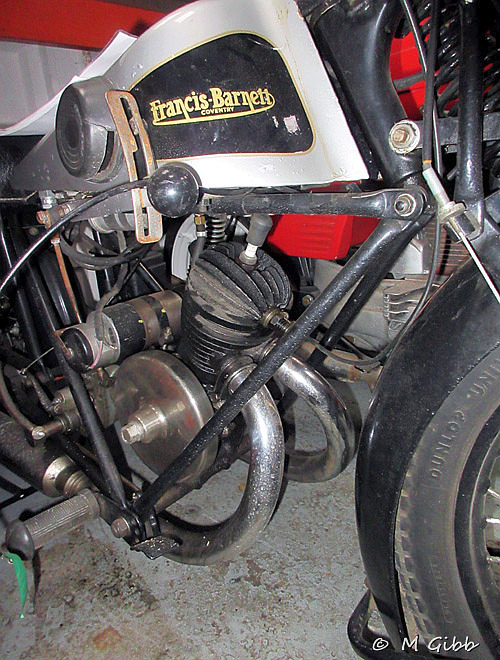 The
triangulated frame of a Francis–Barnett.
The
triangulated frame of a Francis–Barnett.
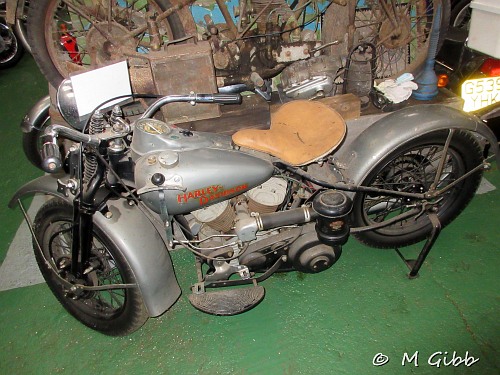 A
Harley–Davidson and. if you like Harley–Davidsons, you’ll have more idea
about what sort is is than we do.
A
Harley–Davidson and. if you like Harley–Davidsons, you’ll have more idea
about what sort is is than we do.
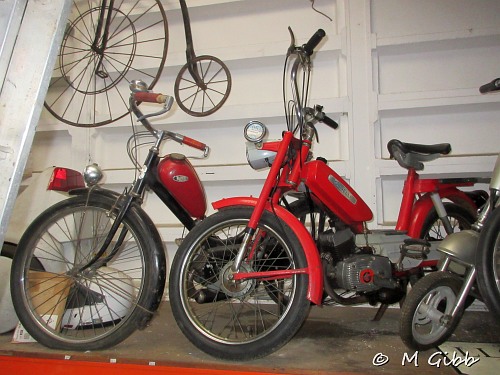 The
moped on the left is a Terrot Cyclomatic, and beside it is a Garelli
Bimatic.
The
moped on the left is a Terrot Cyclomatic, and beside it is a Garelli
Bimatic.
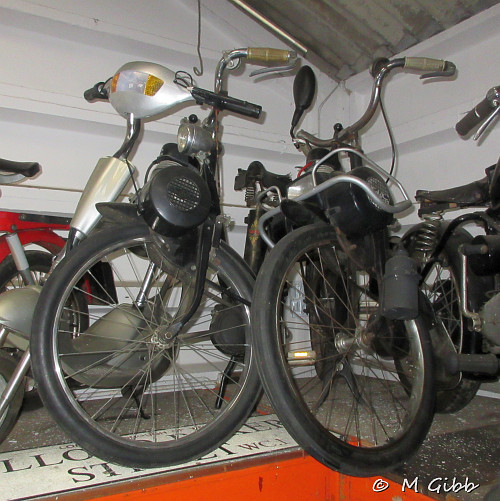 A pair of
VéloSoleXes
A pair of
VéloSoleXes
 Another Excelsior, but with a
Villiers engine this time.
Another Excelsior, but with a
Villiers engine this time.
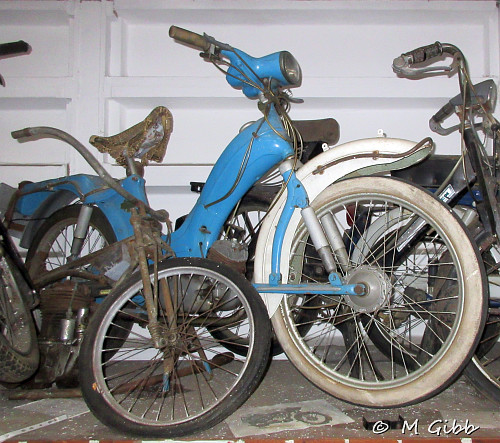 Victoria Luxus moped
Victoria Luxus moped
 Another
VéloSoleX and another Garelli
Another
VéloSoleX and another Garelli
 A Raleigh
bicycle—it might look older at first sight but our guess is that it’s
from the 1970s
A Raleigh
bicycle—it might look older at first sight but our guess is that it’s
from the 1970s
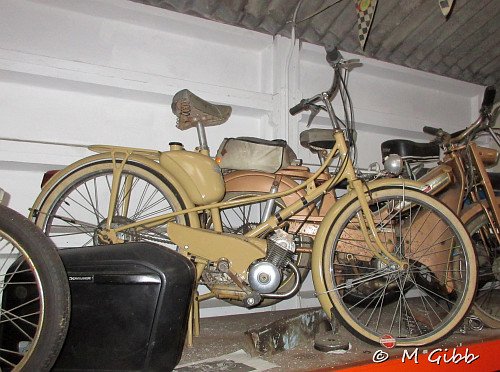 Motobécane AV33 Mobylette de
Luxe
Motobécane AV33 Mobylette de
Luxe
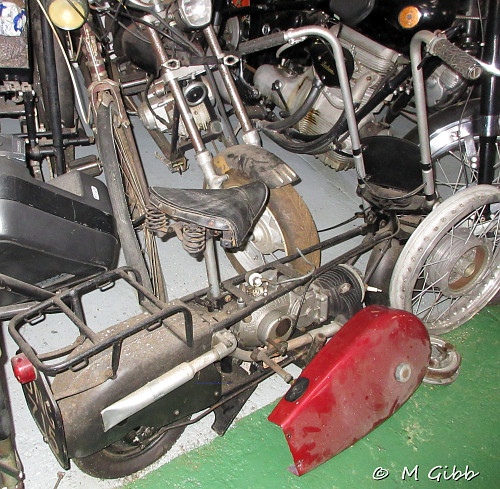 1948 Brockhouse Corgi Mk.II
1948 Brockhouse Corgi Mk.II
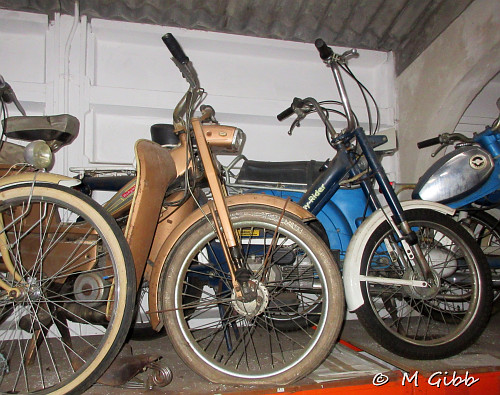 A
Mobylette and an NVT Easy Rider
A
Mobylette and an NVT Easy Rider
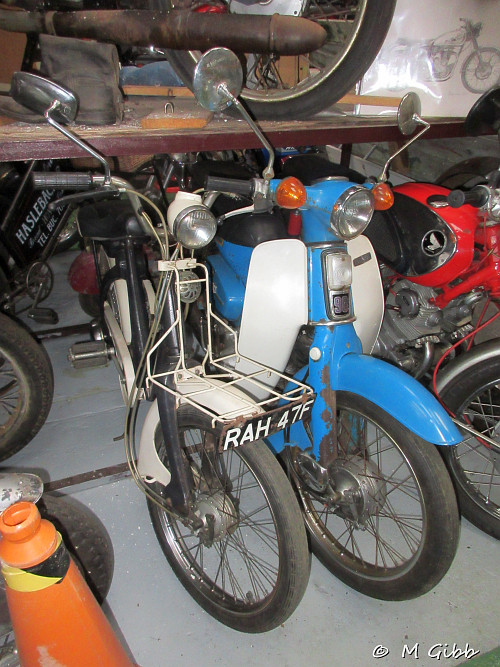 Two Hondas: a
P50 and a C90
Two Hondas: a
P50 and a C90
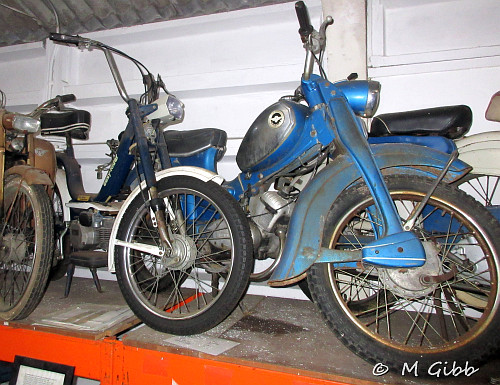 That NVT Easy Rider again, and a Zündapp Super Combinette
That NVT Easy Rider again, and a Zündapp Super Combinette
 A Honda PC50
and a 1965 Raleigh RM5 Supermatic— the earlier leading-link fork
version.
A Honda PC50
and a 1965 Raleigh RM5 Supermatic— the earlier leading-link fork
version.
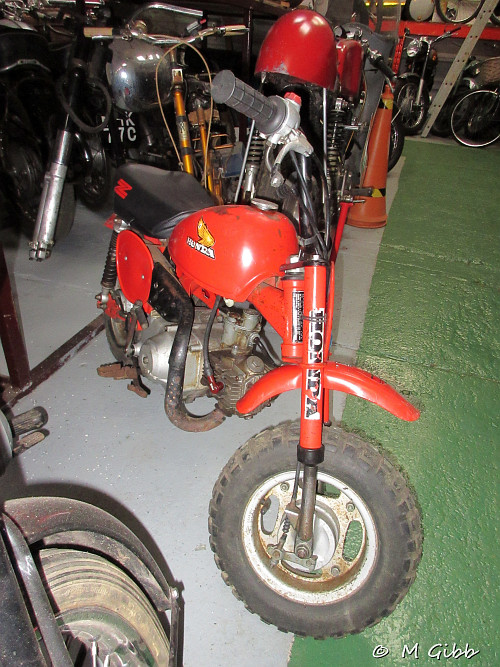 Honda Monkey Bike
Honda Monkey Bike
 A Puch
Maxi and a Raleigh RM6 Runabout
A Puch
Maxi and a Raleigh RM6 Runabout
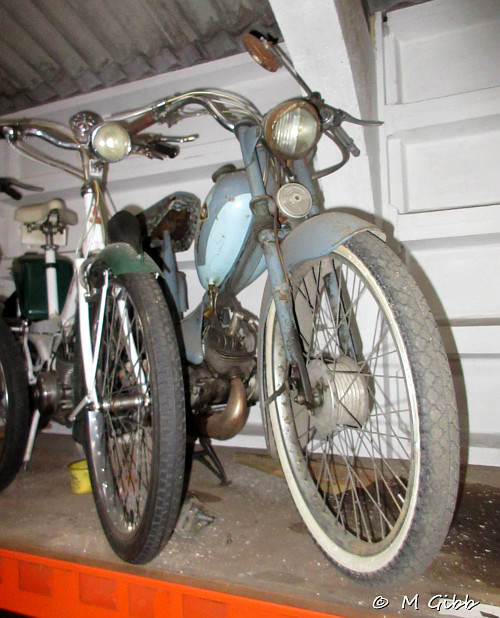 The same RM6
has a Peugeot BB1T beside it.
The same RM6
has a Peugeot BB1T beside it.
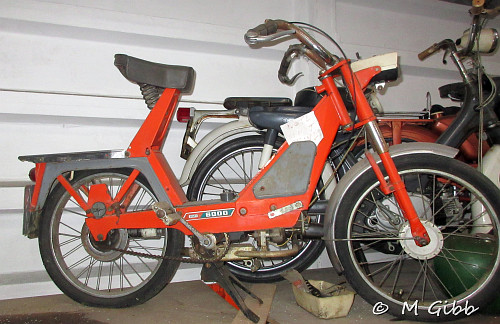 Another
VéloSoleX, but this is the shaft-drive 6000 model.
Another
VéloSoleX, but this is the shaft-drive 6000 model.
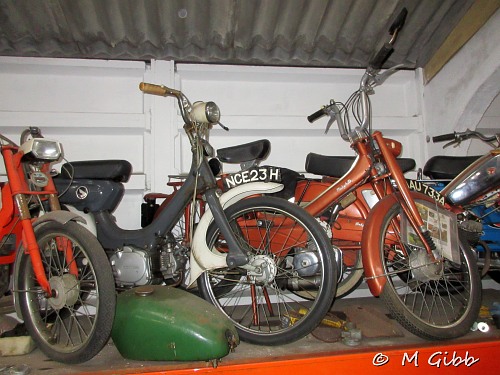 Next we come to a 1969 Honda PC50 and
another Mobylette. The registration number is no clue to its age as
AAUnnnA was a Nottingham non-age-related re-registration
series.
Next we come to a 1969 Honda PC50 and
another Mobylette. The registration number is no clue to its age as
AAUnnnA was a Nottingham non-age-related re-registration
series.
A-suffix numbers were introduced in 1963 when some
local authorities (notably Middlesex) were running out of the
three-number three-letter registrations. However, most authorities
had plenty of the old numbers left so ignored the new system and carried
on with the old one. most started using B registrations in
1964 but a few managed to hold out for another year before they were
brought to heel. When a re-regisration was needed—usually when a
number had been transferred to another vehicle—they resorted to their
unused A-suffix numbers.
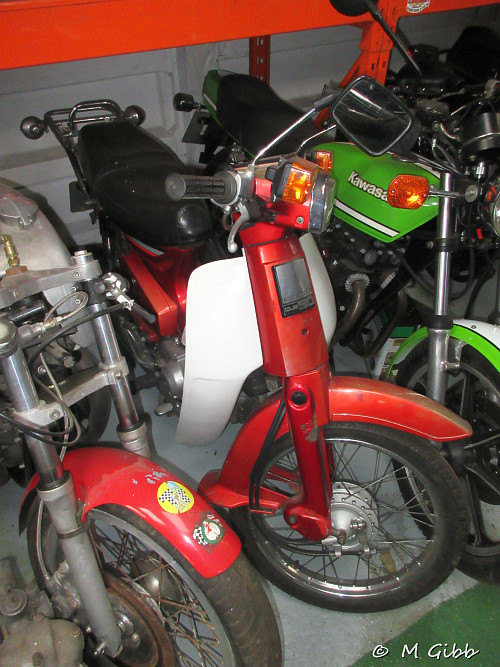 Back down to the floor and a
Honda 90 Cub
Back down to the floor and a
Honda 90 Cub
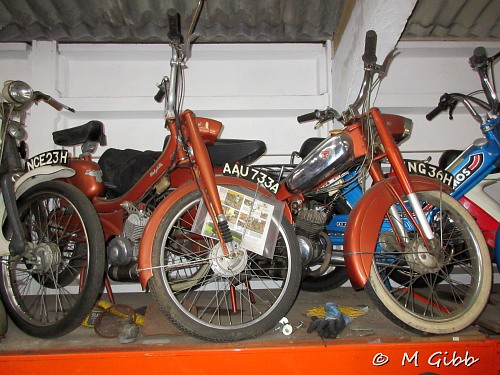 Back up to
the shelf and two bronze Mobylettes, the one we haven’seen before is a
1970 AV89—whic is the later version with telescopic forks.
Back up to
the shelf and two bronze Mobylettes, the one we haven’seen before is a
1970 AV89—whic is the later version with telescopic forks.
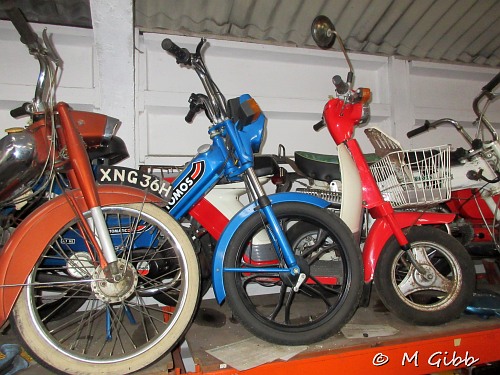 The Tomos
will be an A3-something.
The Tomos
will be an A3-something.
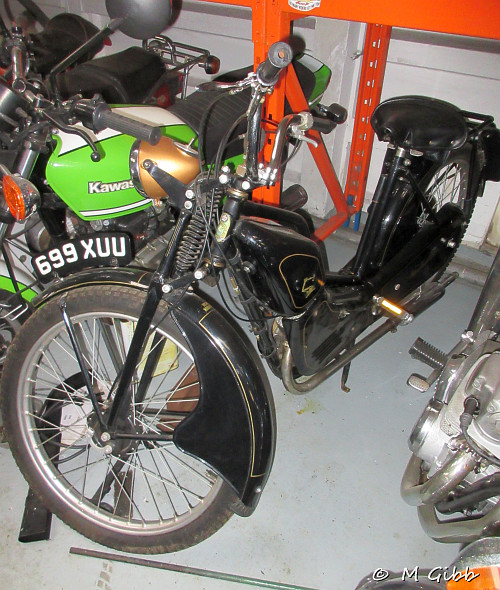 A New Hudson Re-styled
Autocycle. The standard colour was maroon but a few black ones like
this were made.
A New Hudson Re-styled
Autocycle. The standard colour was maroon but a few black ones like
this were made.
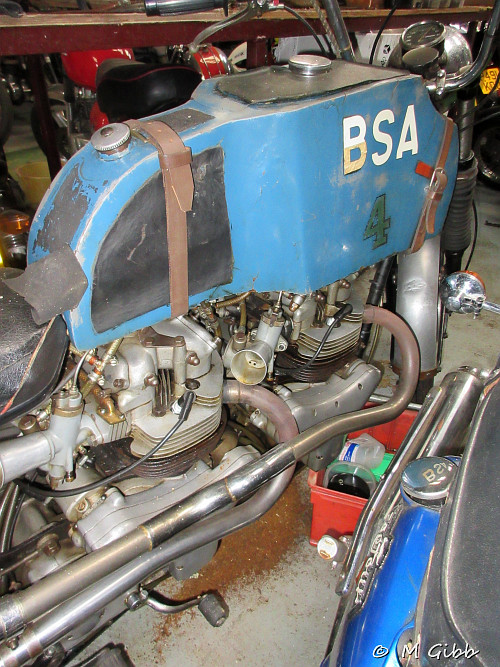 Take one frame
and two engines, giving four cylinders, put them together, and this is
what you end up with.
Take one frame
and two engines, giving four cylinders, put them together, and this is
what you end up with.
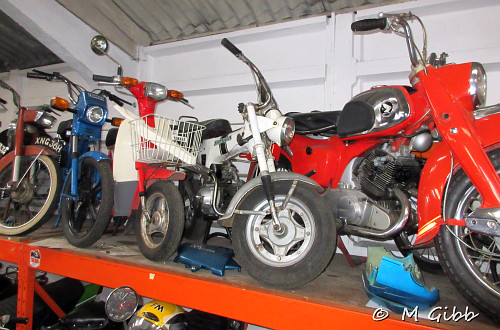 Three Hondas:
the middle one is a Dax and the others … aren’t.
Three Hondas:
the middle one is a Dax and the others … aren’t.
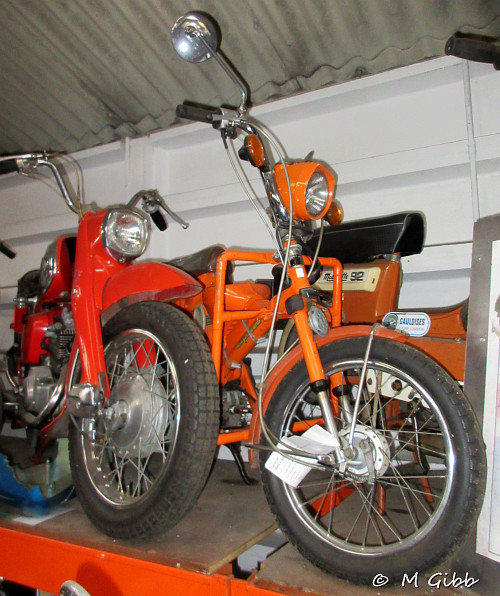 Honda
Express
Honda
Express
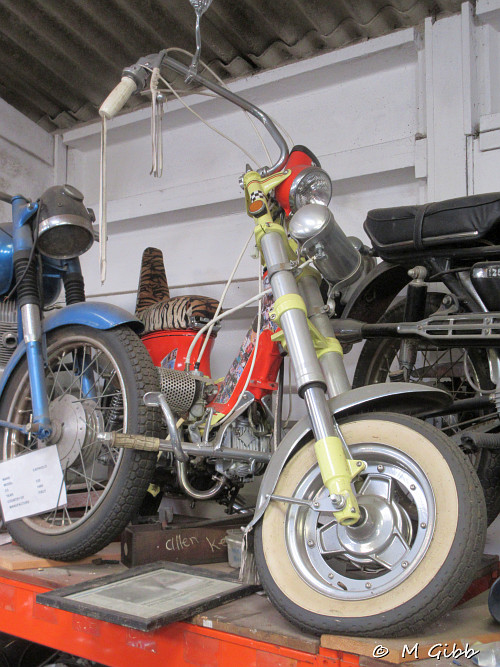 You’re guess is as good as mine
on this one.
You’re guess is as good as mine
on this one.
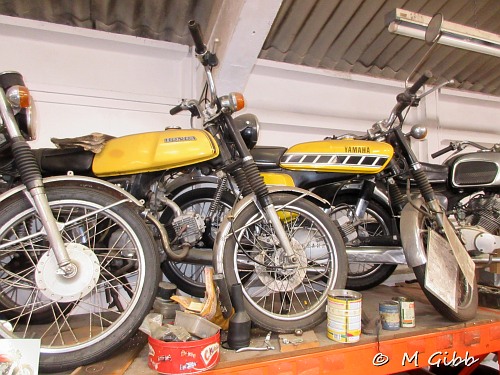 Rivals for
the sixteener market: a Honda SS50 and a Yamaha FS1-E
Rivals for
the sixteener market: a Honda SS50 and a Yamaha FS1-E
 A BMW C1 along with its nemesis: a
crash helmet.
A BMW C1 along with its nemesis: a
crash helmet.
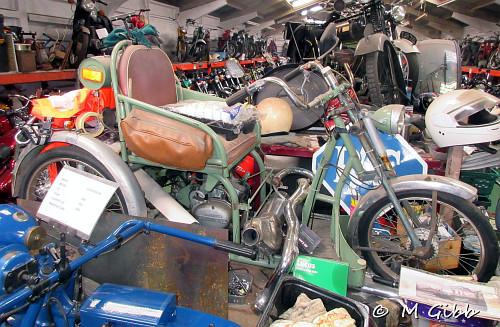 This
Poirier tricycle is the version powered by a Sachs engine…
This
Poirier tricycle is the version powered by a Sachs engine…
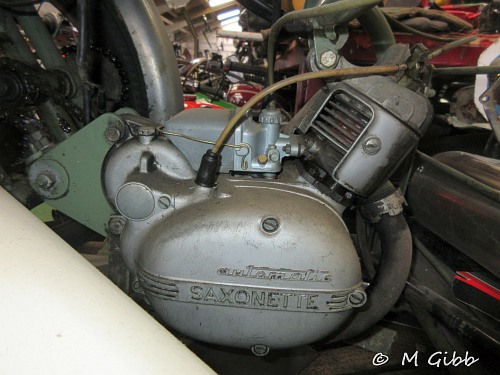 …and
here is that engine.
…and
here is that engine.
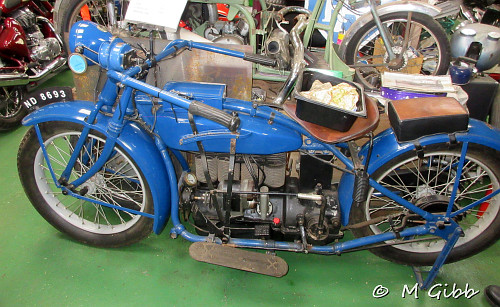 Four-cylinder Henderson from
the mid-1920s.
Four-cylinder Henderson from
the mid-1920s.
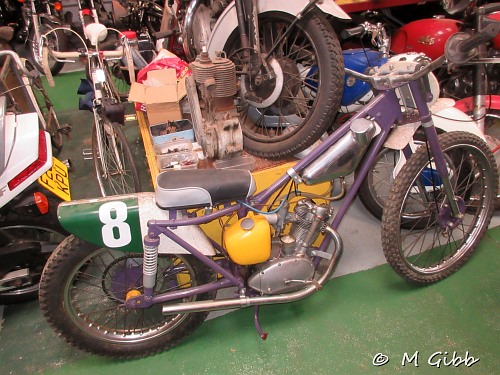
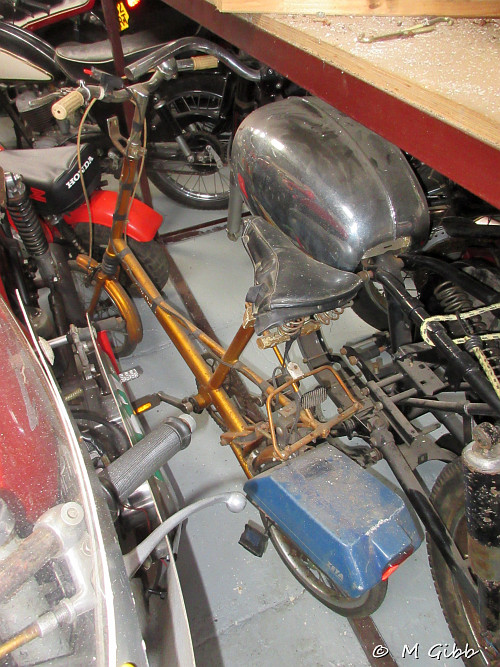 This
Moulton Mini is fitted with a Sinclair Zeta electric ‘power’ unit.
This
Moulton Mini is fitted with a Sinclair Zeta electric ‘power’ unit.
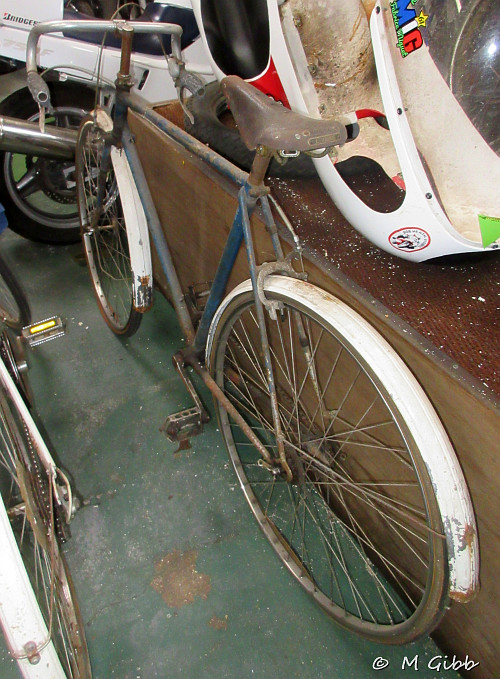 Unlike the
other Raleigh bicycle, this one may be older than it looks at first
sight: possibly from the late-1930s.
Unlike the
other Raleigh bicycle, this one may be older than it looks at first
sight: possibly from the late-1930s.
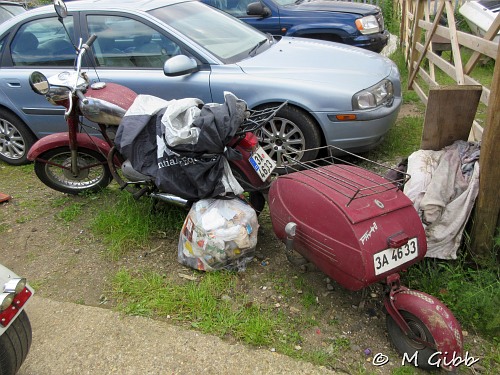 Finally,
outside the museum building, there was this Jawa and trailer.
Finally,
outside the museum building, there was this Jawa and trailer.
Published June 2024
| CAMmag Home Page | List of articles |